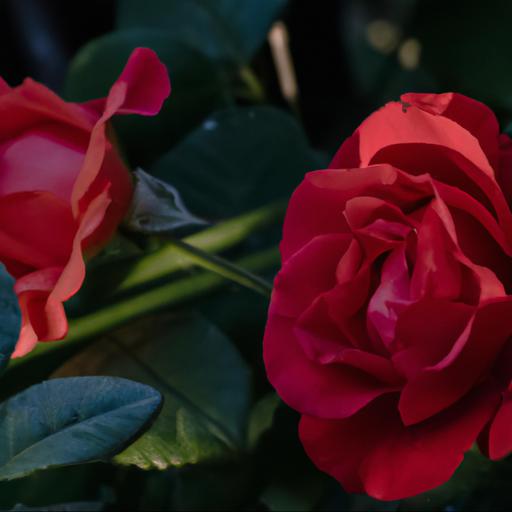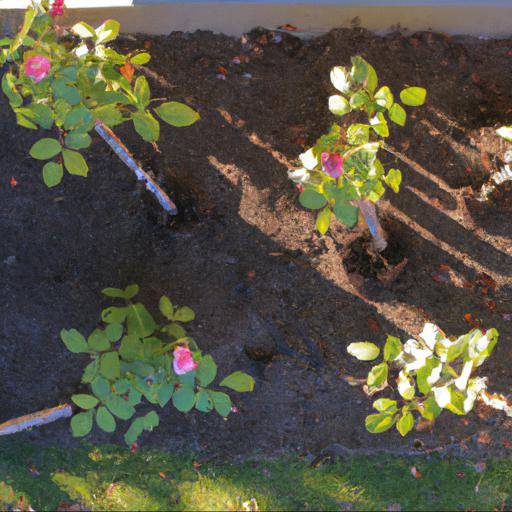Are you looking for a beautiful flower to add to your garden but don’t have enough sun to grow a rose? Don’t worry! There are roses that thrive in partial shade.
These roses come in a variety of colors and textures, and can add a touch of elegance to any garden. In this blog, we will discuss the best types of roses for partial shade, how to care for them, and the benefits of growing roses in partial shade.
So, if you’re looking for a rose that can survive in a shady spot, read on to learn more!
Benefits of growing roses in partial shade

Growing roses in partial shade can be a great way to get color and fragrant flowers in your garden without having to deal with too much direct sunlight. If you’re looking to spend less time pruning and tendering your roses, growing them in partial shade can be a great way to keep your roses healthy and colorful, while also requiring much less effort on your part. In this blog, we’ll look at the advantages of growing roses in partial shade.
One of the key benefits of growing roses in partial shade is the fact that they won’t burn in the intense sun, which can be a problem for many roses. This can be beneficial in especially hot areas, as it means roses can continue to produce vibrant flowers without their petals suffering from the heat.
Additionally, roses grown in the partial shade tend to put on a more extended bloom cycle. These blooms tend to be larger and longer-lasting than those grown in direct sunlight. Moreover, being in the shade, roses can be planted closer together than when grown in full sun.
This can give your rose bed a more plentiful and lush appearance as the plants have more space to grow. Furthermore, when growing roses in partial shade you don’t have to spend too much time watering them.
This is because they won’t be cooked in the sun, so a more moderate watering schedule can be used, cutting down on maintenance hours. As a result, roses grown in partial shade can require less overall care and effort than those grown in the sun. In conclusion, growing roses in partial shade has numerous benefits.
From a longer blooming season to needing less water and effort to maintain, partial shade can be a great option for those looking to add vibrant roses to their garden without taking on a lot of extra effort or care.
Types of roses suitable for partial shade

For gardeners looking for roses that can tolerate some shade, there are several types of roses that can make a garden look beautiful even when it doesn’t get direct sunlight. Partial shade roses are tolerant of some shade and are perfect for gardens where the sun isn’t in the direct line of sight. One of the most popular of these partial shade roses is the Clara Curtis Climbing rose, whose branches can grow up to five feet long and bear creamy pink roses in late spring and early summer.
Another popular partial shade rose is the English rose ‘The Fairy’, which has clusters of fragrant pink blooms that last through the summer and into the fall. This rose is low maintenance, can tolerate some shade, and is perfect for an informal garden setting.
For added color and renewal of blooms, the Hybrid Tea Rose ‘Fragrant Cloud’ should be considered. This rose has deep dark yellow buds that open to large white and pink blooms that fragrance the garden with a citrusy scent. This rose is drought and shade tolerant, making it the perfect choice for gardens in areas that don’t get full sun exposure.
When it comes to partial shade roses, there is certainly no shortage of beautiful options. Between Clara Curtis Climbing roses, English roses, and Hybrid Tea roses, there is something for every garden.
Whether looking for a low-maintenance rose, a fragrant addition to the garden, or a pop of colour to break up the shade, partial shade roses have got you covered.
Tips for planting and caring for roses in partial shade

Nothing says love like the splendor of a beautiful rose bush blooming in your garden. But if you have a patch of partial shade in your garden, you may feel like you can’t grow roses because they prefer full sunlight.
Not true! Roses can be grown in partial shade, with some additional care and attention. First, you will want to select a rose variety that is specifically designed for growing in partial shade.
Some of your best options include the ‘Climbing Sunrise’ that offers an abundance of fragrant, coral-orange blooms, or the ‘Quietness Pink Cluster’, with an array of coral-pink flowers that are sure to brighten any shade garden. To keep these roses vibrant and blooming, you’ll need to make sure they receive the proper water, fertilizer and mulch.
Watering is particularly important for roses that are grown in partial shade, since temperatures are typically lower and humidity is higher in shaded gardens. Aim to water your roses deeply weekly, and check the soil to make sure it doesn’t dry out too quickly. Fertilizer should also be added to the soil every spring and again in mid-summer.
Applying mulch around the plants will also help keep the soil moist, as well as keep weeds at bay and prevent soil runoff. Finally, you will want to keep an eye on the roses for any signs of disease.
Shade gardens are more prone to fungal infections such as black spot, so you’ll want to check the leaves and stems regularly and if you do spot signs, research a suitable fungicide to help treat the problem. With proper care and the right choice of roses, you can have an abundance of beautiful blooms in your partial shade garden.
Conclusion
This article provides information on roses that can be grown in partial shade. It outlines the best varieties of roses to grow, with tips on how to ensure they thrive in these conditions. It includes advice on soil preparation, watering, and pruning, as well as other helpful tips to ensure success.
With the right care, roses can be grown in partial shade, adding beauty and color to any garden.
FAQ
What type of roses are best for partial shade?
The best types of roses for partial shade are English Roses, Floribunda Roses, and Shrub Roses.
How much sunlight do roses need to thrive in partial shade?
Roses need at least 4-6 hours of direct sunlight per day to thrive in partial shade.
What are the benefits of planting roses in partial shade?
The benefits of planting roses in partial shade include protection from intense sunlight, reduced water requirements, and improved disease resistance. The cooler temperatures and reduced sunlight in partial shade can also help to extend the flowering season of roses.
How often should roses in partial shade be watered?
Roses in partial shade should be watered about once a week, or when the top inch of soil is dry.
What other plants can be planted with roses in partial shade?
Other plants that can be planted with roses in partial shade include ferns, hostas, astilbes, and impatiens.
What are the best soil conditions for roses in partial shade?
The best soil conditions for roses in partial shade are well-draining, nutrient-rich soil with a pH between 6.0 and 6.5. Additionally, the soil should be amended with compost or other organic matter to provide additional nutrients and moisture retention.

